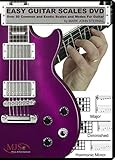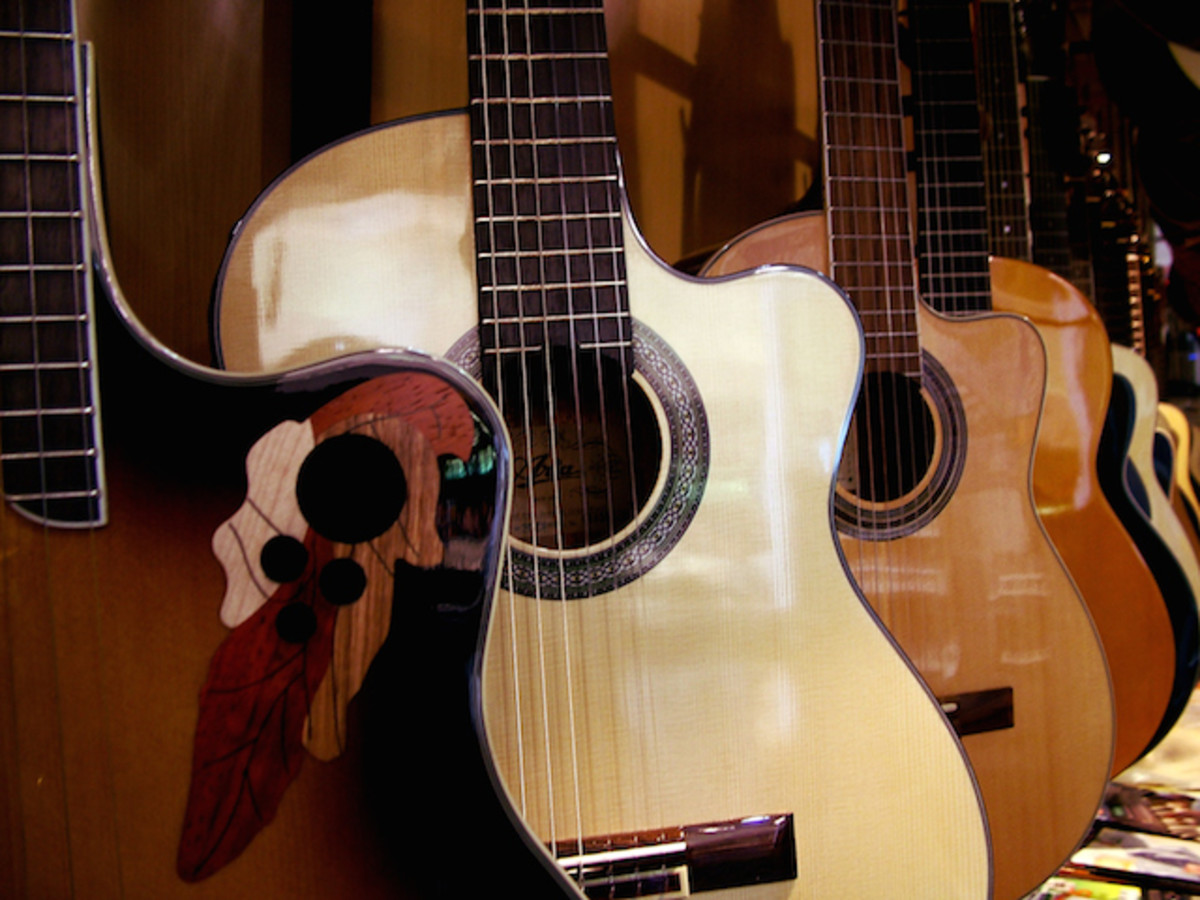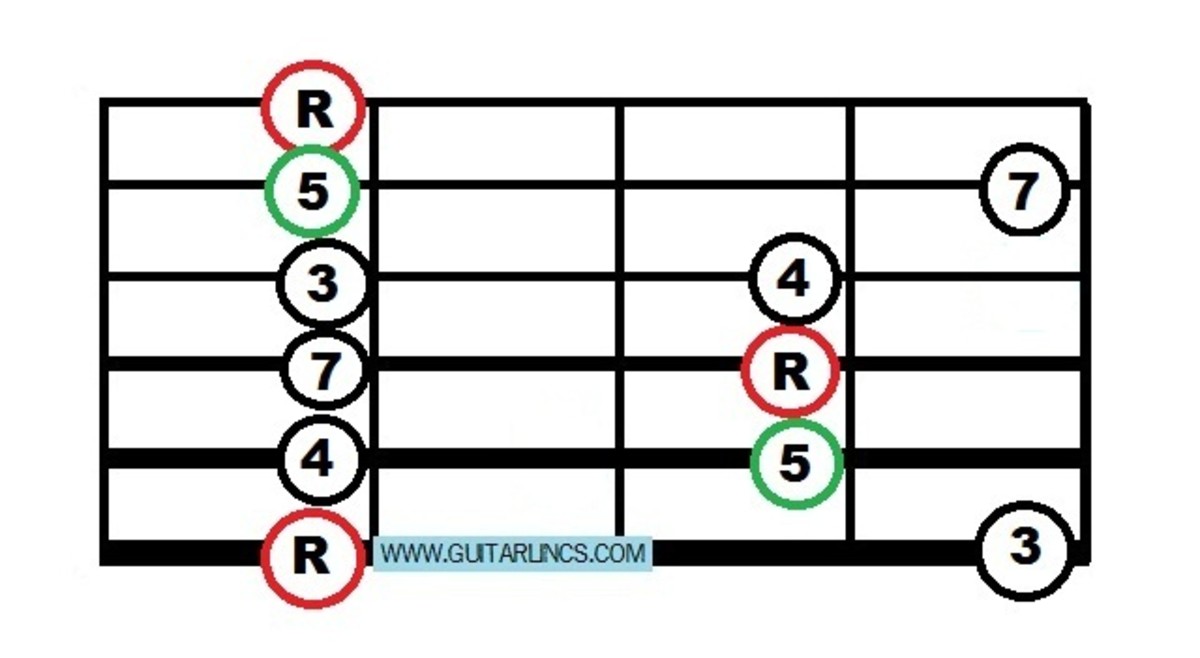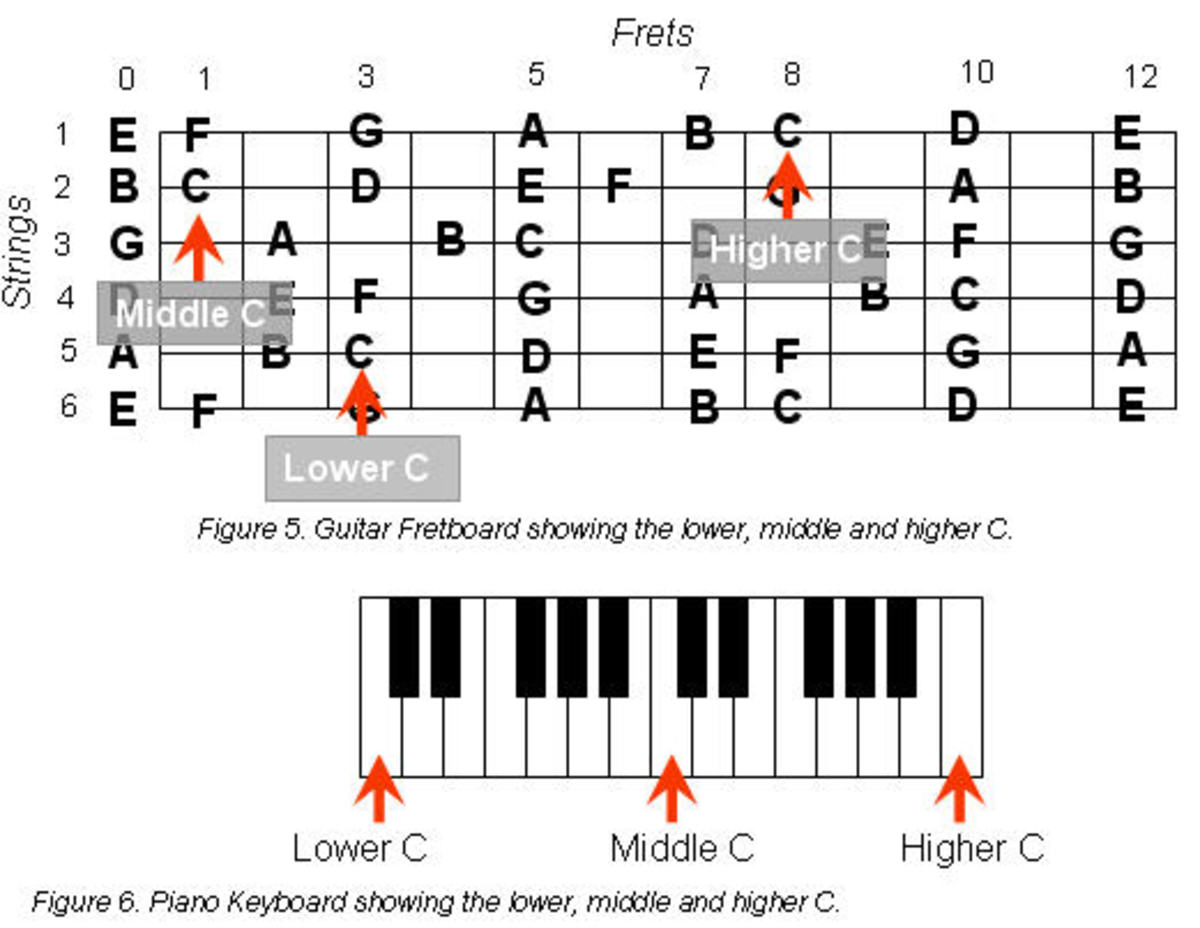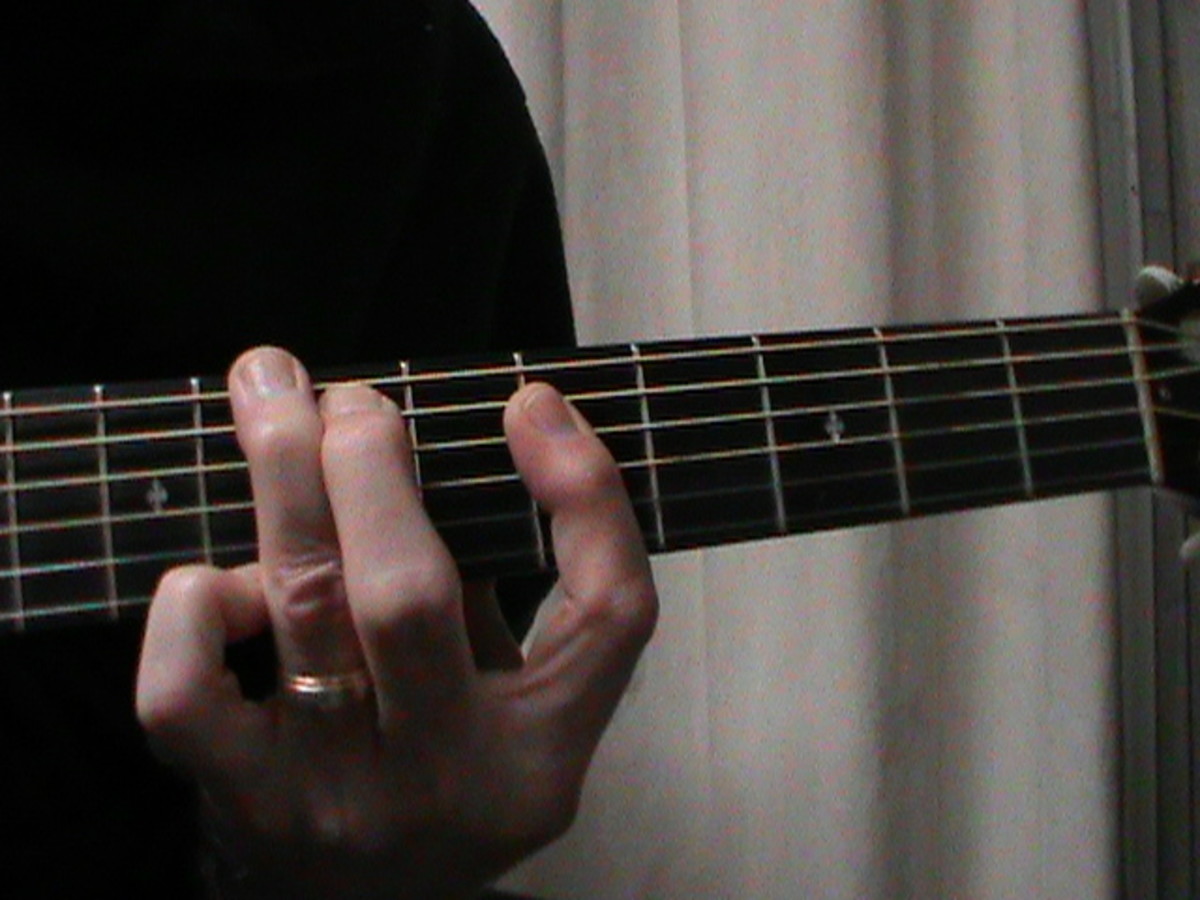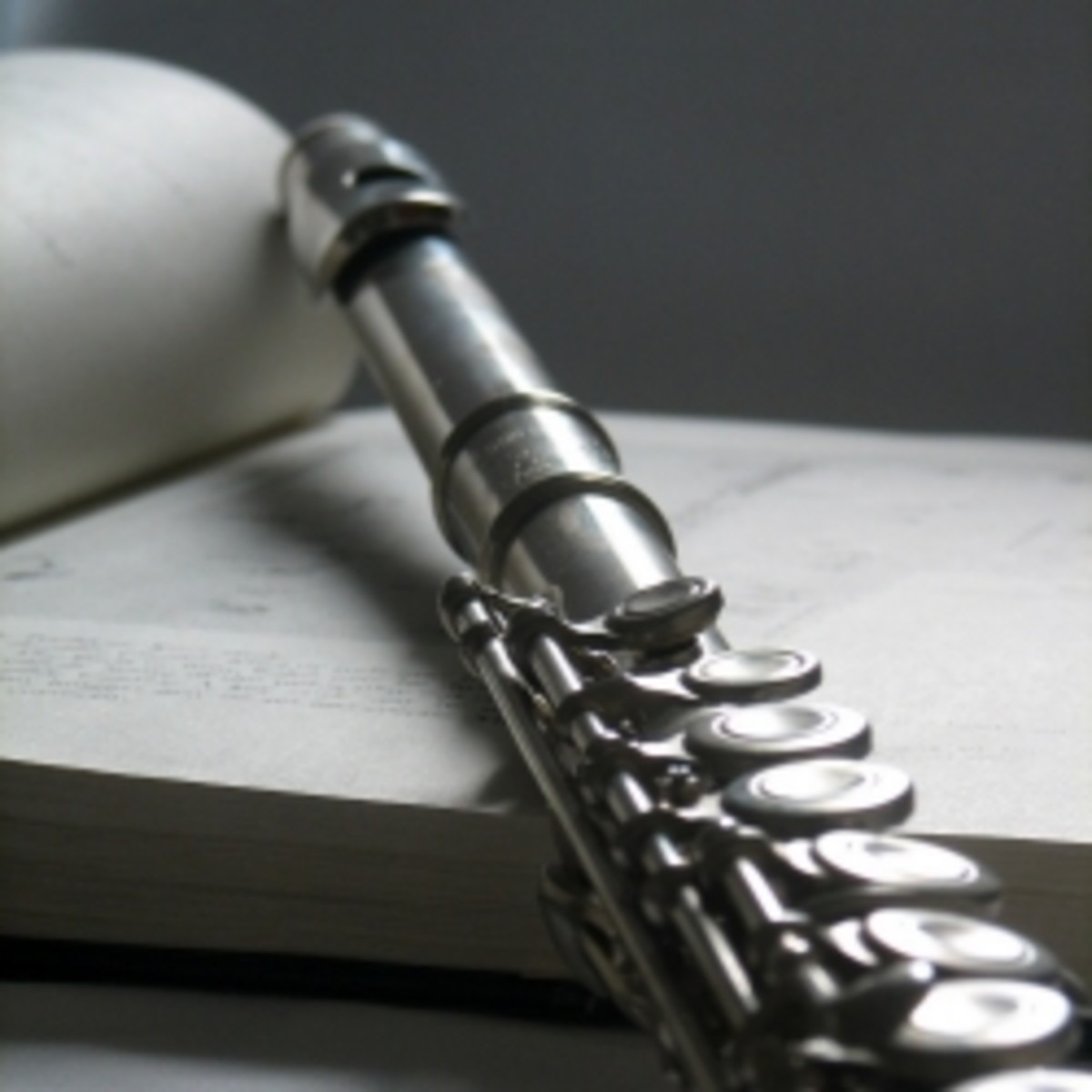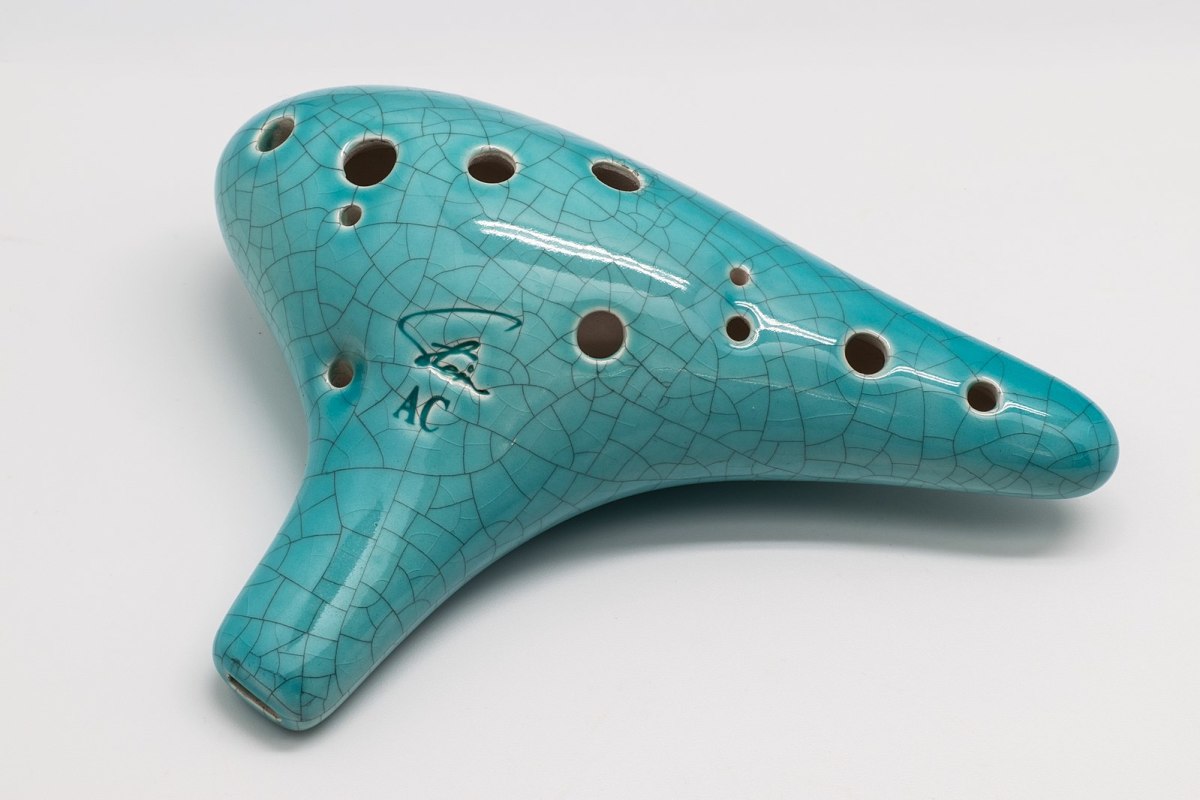How to play Guitar Modes and understand them.
What are guitar modes and how do we use music modes to improvise?
What are music modes? Would you like to master and use modes in improvising music? What do modes of scales sound like and are they even worth learning about? How do they relate to improvising and to chords? If you have ever heard guitarists or jazz musicians discuss music modes and the theory that goes along with them, it may seem like a complete mystery to you. Music modes are complicated sounding things with odd names that seem to bounce off the tongues of those in the know and off the heads of the rest of us.
This page aims to explain modes in simple language and show how you can make them work in YOUR music. Now I am a guitarist, so my experience comes from guitar modes, but the theory behind it all is the same for all instruments. Whether you play guitar, piano or a melody instrument, using music modes is easier than you think and you can start mastering them today!
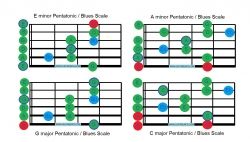
Feel free to print graphics here.
Please rest assured that ALL images, guitar graphics and music examples, including the chart used here are my OWN copyright, please do not copy them anywhere on the web though you may print from links for personal use!
What are Music Modes? This mode worksheet is free to print
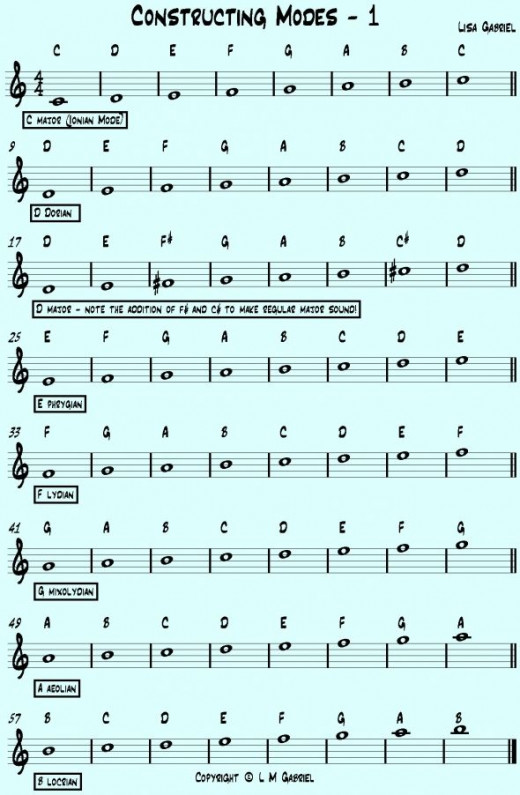
The basic idea of a mode is simple. First take any scale - the simplest might be C major:
C D E F G A B C
Now if you keep to those same notes, but change the starting note, you have a mode.
Here is the D dorian mode - the notes of a C scale, starting and finishing on D:
D E F G A B C D
Now what makes that interesting is the new scale has a completely different character. If you wanted it to have the same sort of sound, you would have to make the F and the C sharp and that would give you D major:
D E F# G A B C# D
So basically when we make a mode, it is like starting on a different note, but NOT putting in the sharps and flats that would make it sound like a normal major scale.
Mastering Modes on Guitar - Resources for Guitar Players
Guitar players will want easy visual representations of modes and how to use them. Here are a few video and DVD resources you might find helpful.
Making Music Modes Work - The image shows the modes all transposed to the same key centre - you can now compare them!
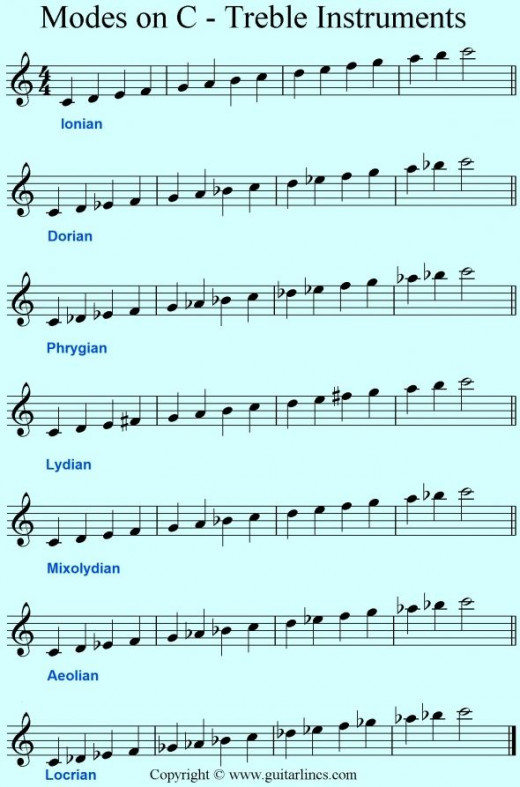
Seeing the modes on the "white notes" didn't particularly help me as a youngster. I found a chart like that in a modern harmony book, tinkered with the not quite right scales on the keyboard and said "So what? Modes are a mystery!" They make no sense until you transpose or change them to a new key center. The picture shows them transposed to C and we will keep C, because it is an easy key for most instruments. The next step to understanding the character change of the modes is to play them through as they are NOW with the new key center.
Copyright on the above image is my own .
Keyboard Cat Color Poster
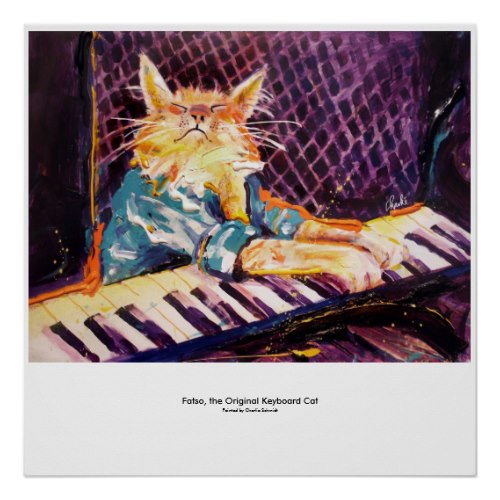
Modal Scales on Piano
Learning Jazz Piano - Resources on eBay
Learn about modes and scales and jazz chords. Improvising jazz piano is easy when you know how!
Phrygian Mode on Piano
Modal Harmony 101 - Guitar Modes and Chords - Check out the big picture (my own copyright work) to see the chords formed from the modes!
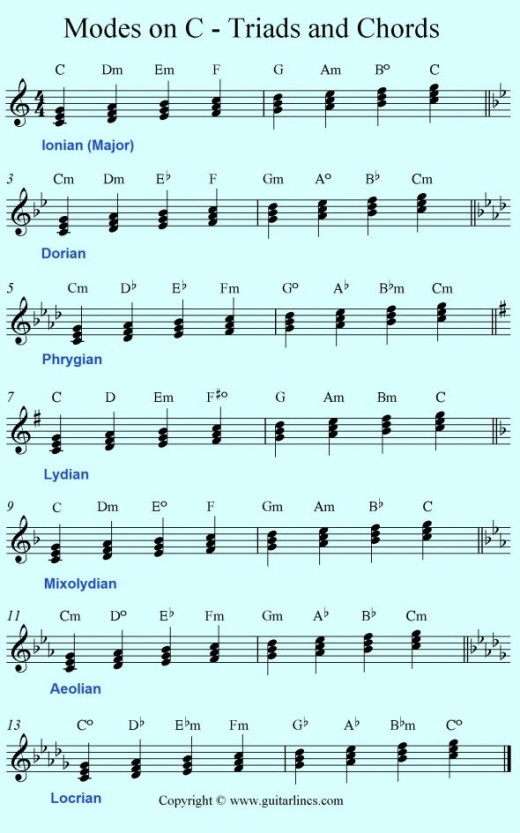
Please note:
Copyright on the above image is my own as creator and site owner. Please don't copy on line, but if you want to save the image and print for personal use, that is fine.
Music triads cannot be rewritten in any way that maintains accuracy. They simply are as they are AND in the public domain for centuries!
Music theory tells us how to build a three note chord (triad) from each note of the scale using the root, a third and a fifth above that. Each scale yields 3 primary chords and 4 secondary chords. The primary chords contain all the scale notes between them and establish the sense of harmony in the music. The secondary chords are like the "spice" in the curry!
So for a C scale (Ionian mode), our main, or primary, chords will be:
C E G - C major chord
F A C - F major chord
G B D - G major chord
Secondary (or "spice") chords will be:
D F A - D minor chord
E G B - E minor chord
A C E - A minor chord
B D F - B minor flat 5 chord (B diminished)
Piano players and guitarists will combine "inversions" of the notes in triads into playable shapes that suit the instrument better and sound stronger!
When you need to know which mode to choose, look at the chords! That will give you the best possible clue.
Mastering the Modes means playing with them!
Use the resources here to take modal studies further
There may not be much available to orchestral players, I am working on that you may be pleased to hear! The links below take you to worksheets for different instruments. Feel free to explore any of these resources, most of which are presently free:
Modes in C -Bass TAB
Modes in C - Bass Notes
Modes in C - Cello
Modes in C - Bb Clarinet (Transposed)
Modes in C - Flute/Oboe
Modes in C - Guitar TAB
Modes in C - Horn in F (Transposed)
Modes in C - Piano/Keyboard
Modes in C - Tenor Sax
Modes in C _ Bb Trumpet/Cornet (Transposed)
Modes in C - Viola (Viola clef)
Modes in C - Violin
Using pentatonics to improvise in G minor
Modes on C - Bass guitar
Modes on C - Trombone
Aeolian Mode - or Natural Minor - for Guitar
Free Modal Lessons on Youtube - Dorian Backing Track
Dorian - a folk scale with a real rock vibe!
The Dorian mode is glorious. So many traditional folk songs are actually dorian in character and yet it works amazingly well in rock. It has a minor sound with an edge to it and there are many guitar players who prefer Dorian mode in their solos.
Free Guitar Lessons on Youtube -Dorian Improvisation
Cello Poster
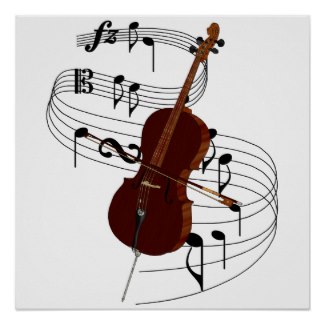
Phrygian Mode - Heavy Rock based on a Spanish Feel
So many metal solos and riffs are based on the Phrygian mode which has a Spanish vibe to it and is darker than the normal minor scale.
The Phrygian Mode
The Natural Minor or Aeolian Mode
This is, for many players, the most natural scale to improvise with. When you move beyond minor pentatonic, just adding the two extra notes of the natural minor will give you a more melodic sound. Think Stairway to Heaven...
Aeolian Mode - the Natural Minor
Mixolydian - A Major Sound with a Blues Colour
A complicated scale name, but a gtreat sound. Mixolydian is basically major but has the flat seventh of the blues scale. Think Texas blues and enjoy!
Mixolydian Mode on Guitar Jamz
The Lydian Mode - Uplifting and Lush
Steve Vai is King of the Lydian mode. I think of it as being "super major" because is has a very bright and lush sound. Used properly, it is spiritual, uplifting and simply gorgeous.
The Lydian Mode
Locrian Mode - Great for Jazz in Competent Hands
The Locrian mode is also great for clearing the pub at closing time in less than competent hands! This is the darkest of all the modes and best suited to diminished chords which means it is not ordinarily tuneful or easy to use. In moderation and over the correct chord types it can really liven up your solos.
How to use the Locrian Mode on Guitar
Jazz Resources Featuring Modes - Resources for Jazz Studies
Soloing is fun when you learn to do it with confidence. These jazz resources feature music modes and will help you make those great sounds you hear on CDs!
Mixolydian Mode on Piano
Whether you play folk, blues, rock, jazz or even Indian classical music you probably have either improvised or have wanted to learn. What is your experience of improvising? What would you like to learn? What tips could you pass on?

